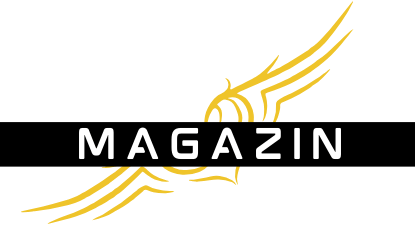Welcome aboard, aviation enthusiasts! Today, as we glide through the skies of 2025, we enter a new era where technology is seamlessly integrated with human capabilities. The cockpit is no longer just a confined space where pilots control an aircraft; it has evolved into a sophisticated hub of advanced technologies and ergonomic designs. This article delves deeply into the intriguing world of cockpit design, exploring its impact on flight efficiency, safety, and the pilot’s experience. Buckle up as we navigate this fascinating landscape.
The Evolution of Cockpit Design
Step into the history of aviation, and you’ll discover a riveting story of transformation. The cockpit has always been central to aircraft innovation, evolving from a simple control panel to a dynamic, interactive space. Early designs focused on basic functionality, where pilots relied heavily on manual controls and a limited set of instruments.
Today, we witness an unprecedented fusion of technology and ergonomics. Modern cockpits are designed to enhance the pilot’s performance and ensure the crew’s safety. This transformation is driven by a combination of advanced systems, intuitive displays, and human-centered design principles.
The Role of Ergonomics
Ergonomics plays a pivotal role in ensuring that cockpit design aligns with the physical and cognitive abilities of pilots. The ergonomic layout of controls and displays minimizes fatigue and maximizes efficiency. By understanding human limits and capabilities, designers create a more comfortable and intuitive environment, ultimately leading to safer flights.
Advanced Technological Integration
Technological advancements have redefined the cockpit, with digital displays replacing analog dials and switches. These innovations provide pilots with real-time data, enhancing their ability to make informed decisions. Moreover, augmented reality and artificial intelligence have introduced new dimensions, offering predictive analytics and seamless interaction between humans and machines.
Pilot-Centric Systems: Enhancing Interaction
The heart of every flight is the pilot, and modern cockpit designs prioritize their needs by centering around user-friendly systems and advanced controls. These innovations are not just about adding new technologies but about enhancing the pilot’s interaction with the aircraft.
Intuitive Control Systems
Gone are the days of cumbersome, complicated control panels. Today’s cockpits boast control systems that are both intuitive and efficient. The use of touchscreen displays and voice-command interfaces means pilots can now interact with the aircraft in a more natural and fluid manner, reducing cognitive load and enhancing situational awareness.
Display Systems: A Window into the Sky
Modern display systems provide a panoramic view of vital information. From weather updates to traffic alerts, these displays offer pilots a comprehensive overview of their flight environment. The integration of heads-up displays (HUDs) further enhances this experience, allowing pilots to focus on their path without needing to glance away.
Enhancing Crew Collaboration
Advanced cockpit designs also facilitate better communication and collaboration among the crew. With networked systems and multi-functional displays, pilots and co-pilots can seamlessly share information, ensuring a harmonized approach to managing the aircraft’s systems and controls. {image_content}
Safety at the Forefront: The Role of Design
In aviation, safety is paramount. Every aspect of cockpit design is scrutinized to enhance safety protocols and minimize risks. With an emphasis on human factors, modern cockpit designs aim to reduce errors and create a secure flying environment.
Human Factors Engineering
Human factors engineering is crucial in cockpit design, focusing on minimizing potential errors through better design ergonomics and system interfaces. By understanding the pilot’s perspective, designers can address potential pitfalls and create an environment that supports their decision-making process.
Reducing Human Error
Advanced cockpit systems incorporate features such as error detection and recovery mechanisms. These systems provide pilots with timely alerts and actionable insights to prevent potential mishaps. By presenting information in an accessible manner, pilots can quickly interpret data and make informed decisions.
Building a Culture of Safety
As technology advances, fostering a culture of safety is more critical than ever. Training programs are being developed to ensure pilots remain proficient with the new systems. By emphasizing continuous learning and adaptation, pilots are better equipped to handle any challenges they might face.
Future-Forward: Innovations on the Horizon
The future of cockpit design is as exciting as it is innovative. With rapid technological advancements, the aviation industry is constantly adapting to meet the challenges of tomorrow. Today’s pilots can expect to see significant improvements in cockpit functionality and design.
The Rise of Automation
Automation is set to become even more integral to cockpit operations. With advances in autopilot systems and machine learning, pilots can delegate routine tasks to automated systems, allowing them to focus on critical decision-making processes. This shift promises to enhance safety and efficiency in flight operations.
Sustainable Design Practices
Sustainability is a growing concern in cockpit design. Designers are exploring eco-friendly materials and energy-efficient systems to reduce the aircraft’s carbon footprint. By integrating sustainable practices, the aviation industry can contribute to environmental conservation efforts.
Embracing Virtual Reality
Virtual reality is poised to revolutionize pilot training and cockpit design. Simulated environments offer pilots a safe space to practice various scenarios, improving their skills and confidence. This technology also aids designers in visualizing cockpit layouts, ensuring optimal functionality and usability.
As we soar into the future, cockpit design continues to play a pivotal role in shaping the aviation landscape. With a keen focus on ergonomics, advanced technologies, and safety protocols, the journey ahead promises a seamless fusion of human ingenuity and technological innovation. For those at the helm of the aircraft, these advancements herald a new era of flight—one where the harmony between man and machine reaches unprecedented heights. Let’s embrace this new dawn in aviation, where the skies are not just the limit, but a canvas for endless potential.
FAQ
What is the importance of ergonomic design in modern cockpit technology?
Ergonomic design in cockpit technology ensures that pilots can operate controls with minimal physical strain, enhancing comfort and reducing fatigue. This leads to improved performance, increased safety, and greater efficiency during flights.
How have touchscreens influenced cockpit ergonomics?
Touchscreens have streamlined cockpit interfaces by reducing the number of physical buttons and controls. This simplifies the cockpit layout, allowing pilots to access information more intuitively and quickly, thereby improving operational efficiency.
What role does augmented reality play in enhancing cockpit design?
Augmented reality (AR) in cockpits offers pilots real-time data overlays and enhanced situational awareness. By integrating AR, pilots can receive critical flight data directly within their field of view, minimizing distractions and improving decision-making.
How do advanced cockpit designs address pilot fatigue?
Advanced cockpit designs incorporate ergonomic seating, optimized control layouts, and user-friendly interfaces to mitigate pilot fatigue. These elements work together to ensure that pilots remain alert and comfortable, even during long-haul flights.
What technologies are being integrated into new cockpit designs to improve safety?
Modern cockpit designs integrate technologies such as artificial intelligence, advanced autopilot systems, and enhanced data analytics. These innovations provide predictive maintenance alerts, assist in risk assessment, and ensure real-time monitoring of aircraft systems, significantly boosting safety protocols.

